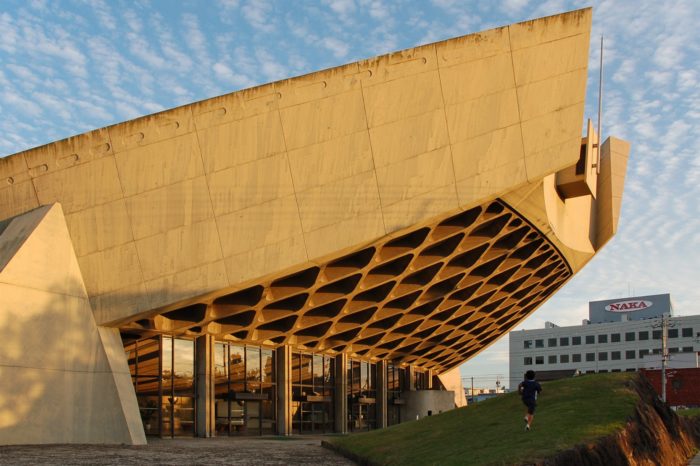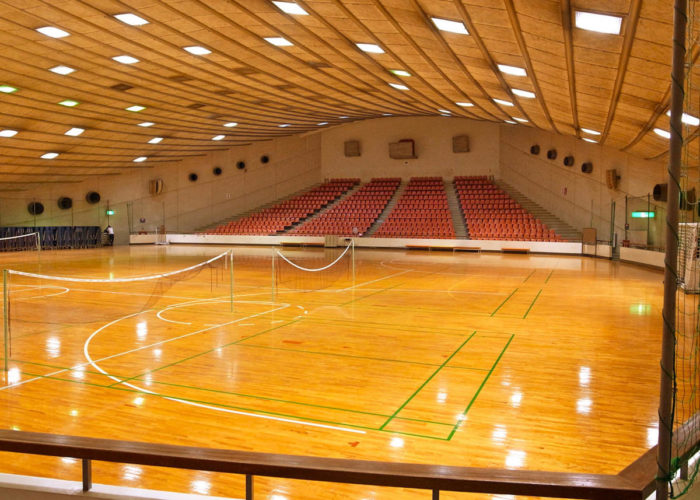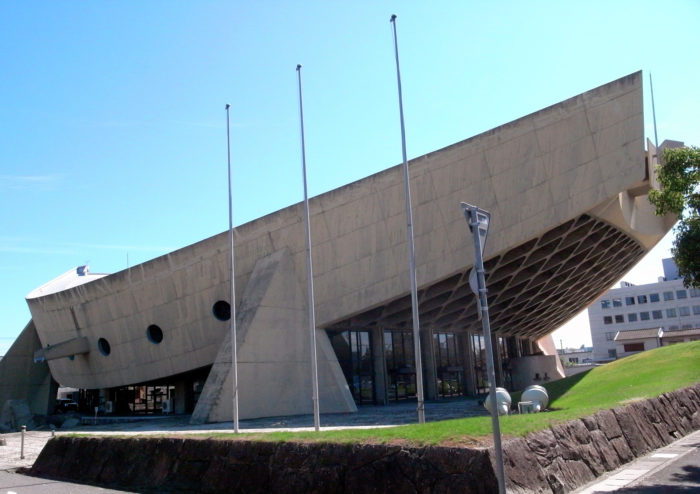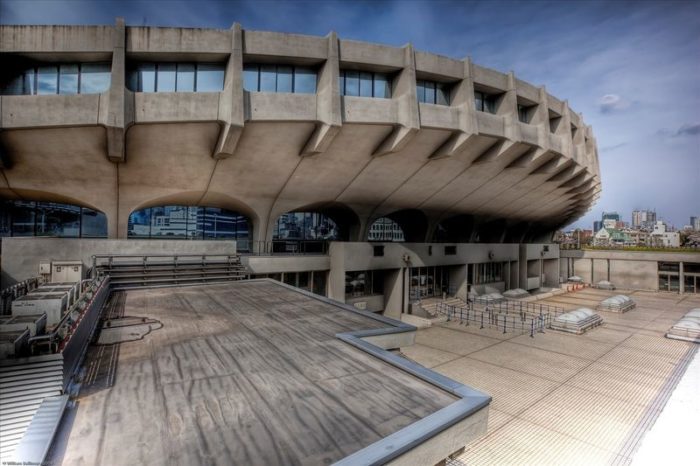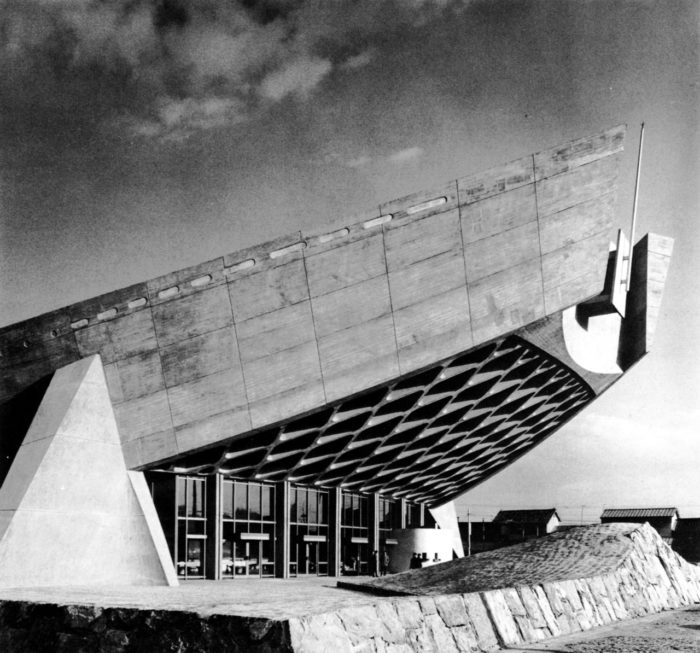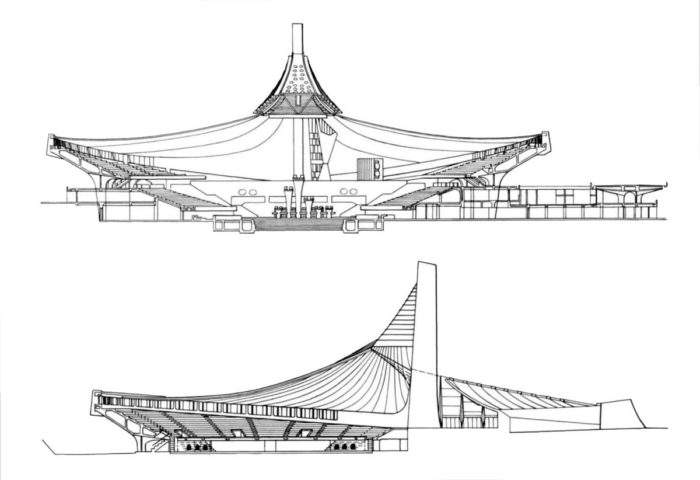In Japan, Toyohito Ikeda, the governor of Takamatsu, has declared that the city’s most recognizable landmark, the Kagawa Gymnasium, will be torn down. The building, designed by Pritzker Prize winner Kenzo Tange and constructed between 1961 and 1964, represents a high point of Japan’s modernist post-war period. In response to this information, a campaign has been created to try to prevent the destruction of this 47-year-old icon.
Kagawa Gymnasium
Its dramatic curves are based on the shape of an athlete’s body, while the building’s contemporary materials are meant to evoke a traditional Japanese wooden boat. At its center is a large concrete ring flanked by four enormous pillars.
Above the main lobby is the sports arena, which hosted the Olympic handball competition in the heart of the structure. The Kagawa gymnasium exemplifies the blending of modern Western architecture and traditional Japanese buildings.
After a roof leak in 2014 weakened the ceiling panels and ultimately led to the site’s closure, concerns about the potential for demolition were first raised. Promoters for the structure in 2021 sought to be recognized as a UNESCO World Heritage site.
Also, in preparation for the Olympic Games in Tokyo in 2020, the World Monuments Fund partnered with the National Collections of Modern Architecture of Japan to mount an exhibition. The architect’s work and the Gymnasium’s status as a local landmark were highlighted in a display called Tange Kenzo 1938-1970: From Prewar Period to the Olympic Games and World Expo.
However, SANAA’s plans to create a nearby gymnasium were revealed recently, further diminishing the building’s utility. The city authorities requested offers from potential buyers and retrofitters but got no takers. Due to a lack of interested parties, the Kagawa gymnasium was scheduled for destruction.
The fate of this cherished monument has already been determined, despite the efforts of numerous institutions and conservancy groups. The government’s choice has drawn criticism from architects who say it ignores the significance of cities’ built environments to their residents’ daily lives.
As of this writing, nearly 4,000 people have signed a plea to save the Kagawa gymnasium. Noriyuki Kawanishi, a local architect who has been going to the gym since he was a kid, is one of the campaigners, saying that the news has made a lot of people “very frustrated and furious.”
“Many people in the district can relate to my story because they, too, have lost a building that was an integral part of their everyday lives, and it is thanks to their support we have been able to keep our operations running.” Noriyuki Kawanishi continued.
Taking Action Without Consulting the People
Noriyuki Kawanishi claims that the regional government decided to tear down the structure without holding a public vote on the matter. “Those in the prefectural government, according to Kawanishi, “who do not comprehend heritage and the arts fiercely advocate for its dismantling. However, the political movement is closed to outsiders, and the decision to demolish the gym was taken with no public debate.”
Although the exact date of its demolition has yet to be announced, Kawanishi estimates that work could commence as soon as two years from now. According to the architect, not enough was done to collect the 2 billion Japanese yen needed to pay for the Kagawa gymnasium’s preservation.
Kawanishi claims that the gym’s conservancy designed by Kenzo Tange will cost two billion Japanese yen, a sum too large for any one person or regional business to shoulder. Kagawa Regional government has not taken any action since the gym closed, but the Japanese government and reputable companies are necessary to combat the current situation.


